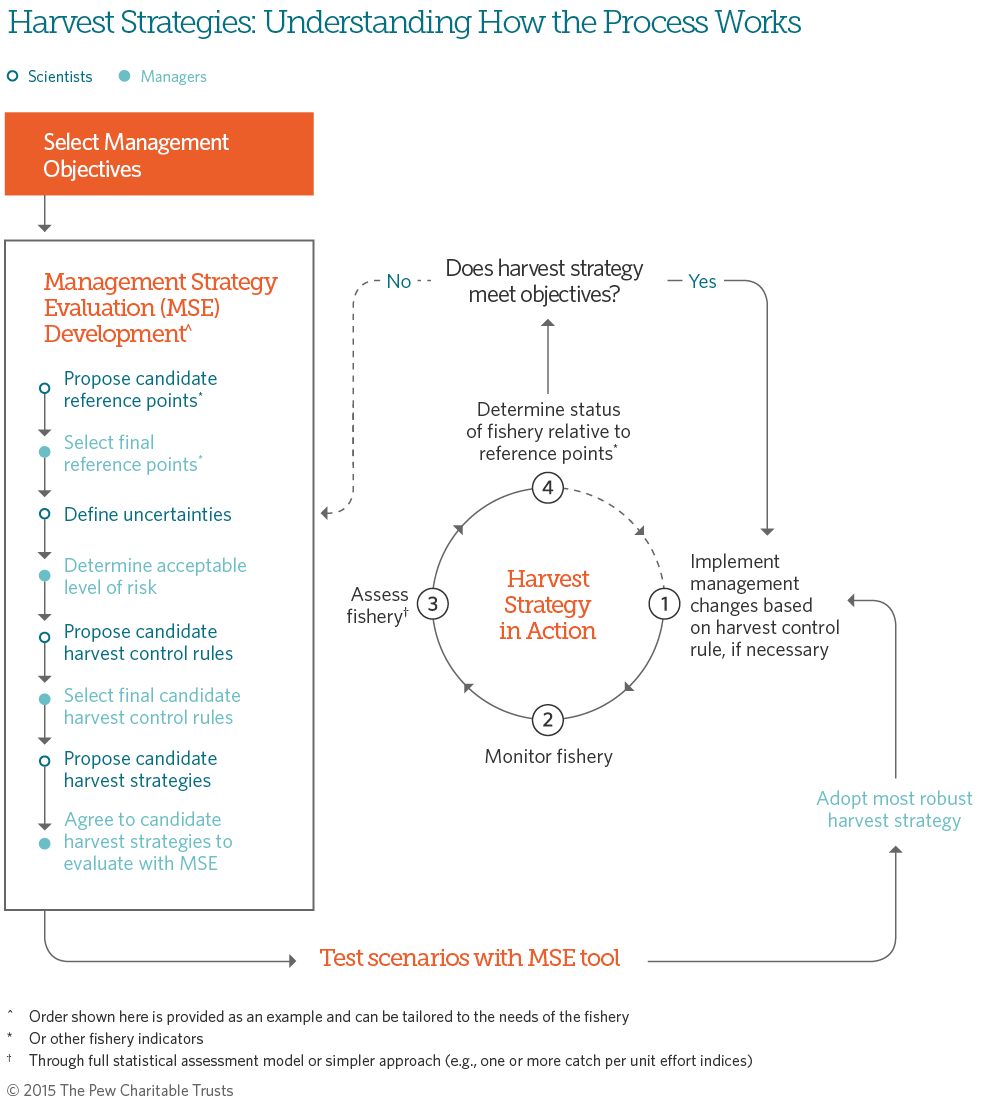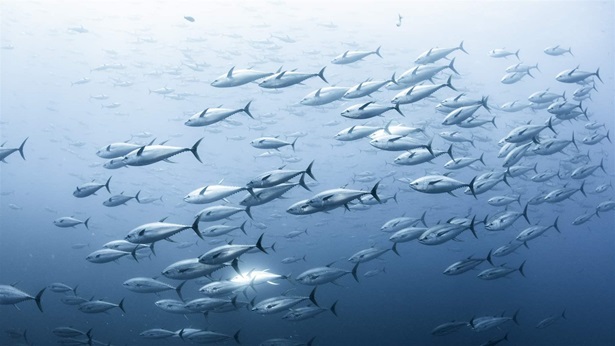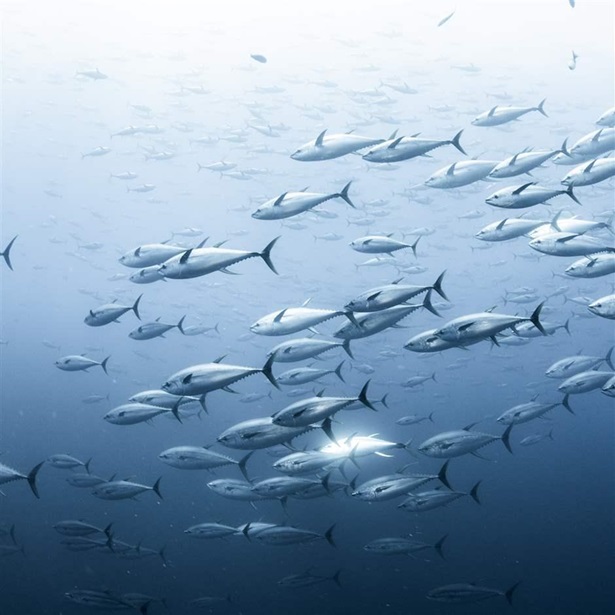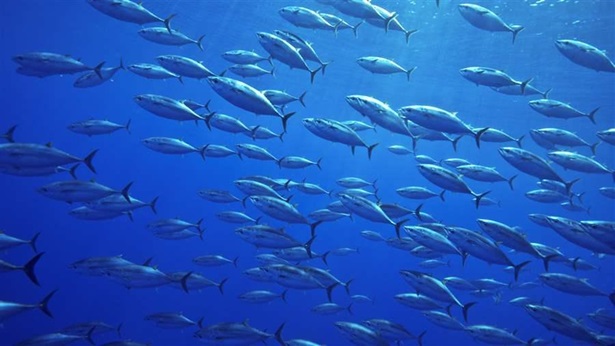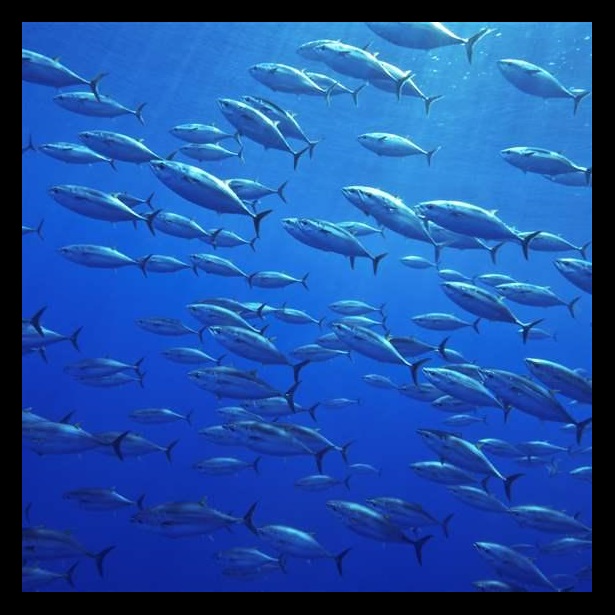Harvest Strategies
The next phase of fisheries management
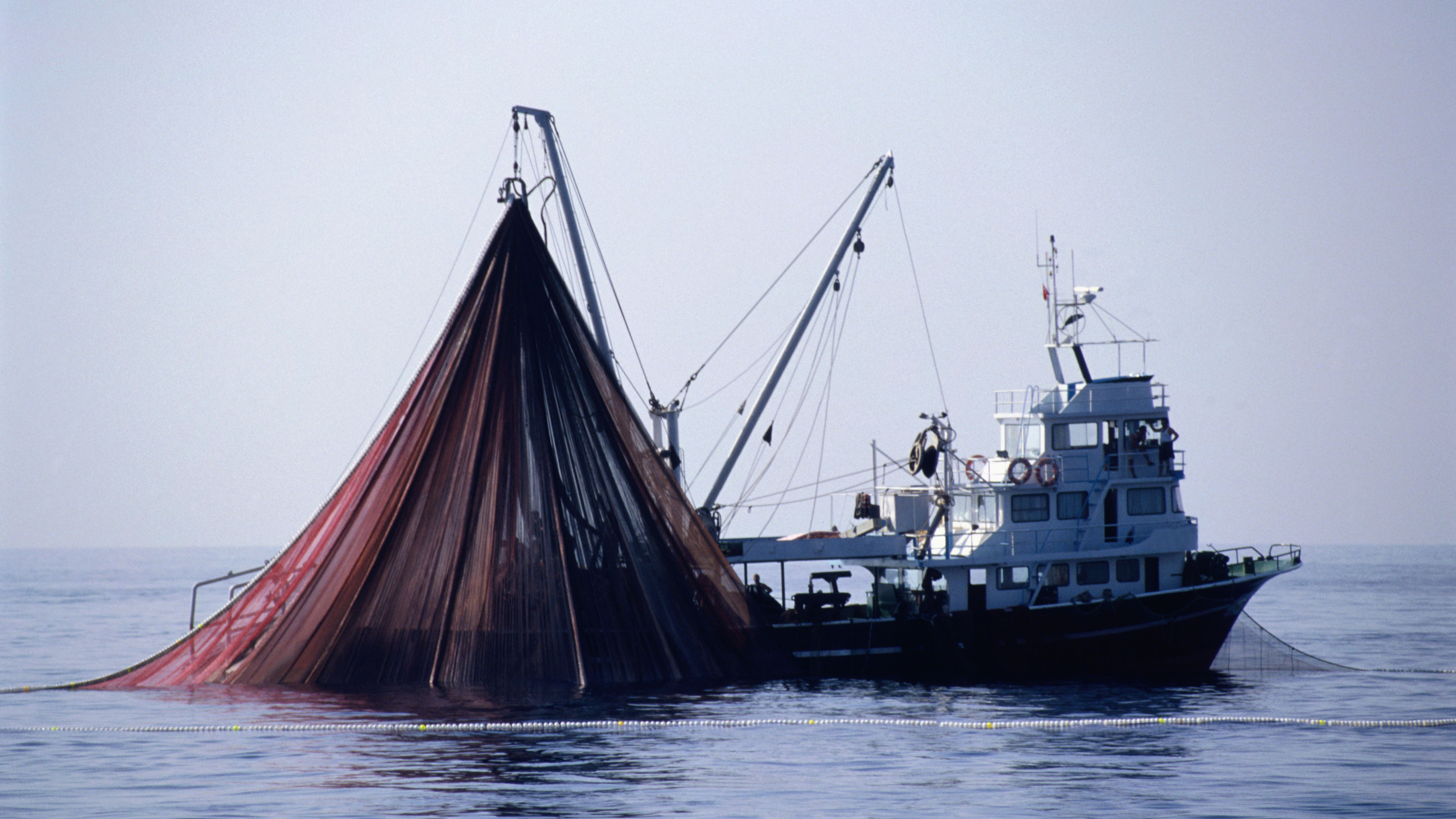 © Punchstock
© PunchstockTuna fishing boat raising its fishing net.
Traditional fisheries management is a two-step process: First, scientists conduct stock assessments, and then fishery managers negotiate measures, such as quotas or time-area closures, to make sure that the resource—the targeted fish—is being used optimally and sustainably. While this seems simple enough, the current approach is anything but.
With imperfect knowledge about fish biology, incomplete fishery data, natural variability, and the inherent challenge in using models to count fish in a population, stock assessments are frequently fraught with uncertainty (see sidebar). That means the results can vary considerably from one assessment to the next. Scientists are asked to provide advice to managers based on these assessments, but given the uncertainties, the advice can be vague or include a wide range of management options.
Most tuna fishery management bodies have committed to following scientific advice and the precautionary approach, but without a clear framework for making management decisions, negotiations often become contentious, time-consuming, and expensive.
But an alternative approach, known as “harvest strategies” or “management procedures,” is emerging as the next innovation in fisheries management. Incorporating existing tools such as monitoring programs and reference points, harvest strategies bring all the pieces together and provide managers with an improved lens through which to determine the best path forward for the fish and the fishery.
What are harvest strategies?
Harvest strategies are pre-agreed upon frameworks for making fisheries management decisions, such as setting quotas. Although different forums define or describe the approach slightly differently, all include the same elements. Those components generally include a monitoring program, a stock assessment method, reference points (or other fishery indicators), and harvest control rules.1 With many moving parts, the number of potential harvest strategies is limitless. Management strategy evaluation (MSE), a procedure based on a simulation tool, helps compare the likely performance of various strategies and in many ways guides the process of harvest strategy development.
The harvest strategy dictates the relationship among the four components and establishes a feedback loop. The data from the monitoring program are fed into the stock assessment method. Then, the assessment evaluates how the fishery is doing relative to established reference points. The results of this evaluation activate the harvest control rule, which leads to modifications to the management measures to ensure that the predetermined management objectives are met. The cycle then begins again with the monitoring program recording the effects of the new measures, the stock assessment evaluating these effects, and so on.
The stock assessment method does not have to be based on the standard full and complex assessment model but can simply be one of the fishery’s catch-per-unit-effort (CPUE) series, a method for estimating the catch rate for that fishery. Likewise, management measures need not be limited to catch limits. Harvest strategies can also include limits on fishing effort or time-area closures. They just have to prove their effectiveness in the management strategy evaluation process.
Advantages of Harvest Strategies Over Traditional Management
Effective harvest strategies can:
- Offset natural variability, scientific uncertainty, and political influence.
- Account for risk and allow for balancing of trade-offs.
- Avoid time-consuming and costly negotiations in response to each stock status update.
- Allow managers to act swiftly and efficiently to ensure the health of the resource and longterm profitability.
- Increase market stability and improve industry’s ability to plan because management decisions are predictable.
- Give all stakeholders a clear, long-term vision of a sustainable stock and fishery.
- Adhere to best practices of modern fisheries management, consistent with the United Nations Fish Stocks Agreement, the Food and Agricultural Organization Code of Conduct for Responsible Fisheries, and the Marine Stewardship Council’s certification standards.
- Effectively implement the precautionary approach.
Components of harvest strategies
Management objectives
The stock assessment method does not have to be based on the standard full and complex assessment model Managers of tuna fisheries commonly approach their work with the general objective of maintaining the population at or above the level that can produce maximum sustainable (BMSY). In the context of harvest strategy development, however, management objectives take a slightly different form. While still setting goals for the fishery, management objectives are more specific and measurable, and often there are more than one. For example, a single stock could be managed with multiple objectives to maximize catch, stability in year-to-year catch limits, profit, the speed of stock rebuilding, and the likelihood that the population is above BMSY (the biomass that will produce maximum sustainable yield) and fished below FMSY (i.e., in the green quadrant of the Kobe plot, a graphical representation of the status of a stock and fishery). In cases in which some objectives are deemed more important than others, managers could choose to weight them. For example, rebuilding the stock in a timely fashion might be the priority, even if that requires a lower catch in the short-term.
The stock assessment method does not have to be based on the standard full and complex assessment model Setting the management objectives is the critical first step in the development of a harvest strategy because all subsequent steps focus on achieving those objectives.
Reference points
Reference points are benchmarks used to compare the current status of a fishery management system to a desirable (or undesirable) state. When matched to the management objectives for a fishery, they can be used to assess progress toward meeting those objectives. There are two main types of reference points—limit reference points (LRPs, or Blim and Flim) and target reference points (TRPs, or BTARGET and FTARGET)—which are often based on fishing mortality rate (for example, FX%) or population abundance, such as BMSY.
Limit reference points define the danger zone, the point beyond which fishing is no longer sustainable. This zone should be avoided, but if it is inadvertently violated, immediate action should be taken to return the stock or fishing rate to the target level. Stock rebuilding programs should consider the LRPs the very minimum rebuilding target.2 Importantly, the LRPs should be based exclusively on the biology of the stock and its resilience to fishing pressure. Economic factors should not be considered.
Target reference points define the ideal fishery state, and management should be designed to keep the resource close to this state with high probability. Given all of the unknowns and uncertainty in stock assessments, as well as fisheries management in general, the TRP creates a buffer zone to ensure that the limit is not breached. The fishery is likely to fluctuate around the target but should not exceed that level on average.3 Unlike setting a limit reference point, the TRPs can be based on biology as well as ecological, social, and economic considerations.
Importantly, both target and limit reference points should be set more conservatively as uncertainty increases. If there is high uncertainty and/or a less comprehensive monitoring program, the TRP should also be set further from the LRP to create a bigger buffer and guard against violation of the limit.
What Is Uncertainty?
Fisheries science by its nature has varying levels of uncertainty. Managers aim to minimize this uncertainty where possible and to understand the potential impact of the amount that remains. Management systems then can be designed to protect against those effects.
Not all uncertainty is created equal. Fishery scientists typically consider four types:
- Model. A set of equations cannot perfectly explain a wild fish population. Which stock assessment model should be used? How should the model be structured?
- Observation. Even the measurable data used in a model are likely to have biases, causing sampling error. Are the catch data accurate? How has technology affected catchability, which is essentially a stock’s susceptibility to fishing?
- Process. Unknowns about the biology and population dynamics of the most studied fish stocks can have significant impacts on estimates of current and future stock status. When do the fish mature? Is the number of young born each year related to the number of adults in the population?
- Implementation. Although precautionary regulations may be in place, compliance and enforcement can be an issue. What is the difference between the catch limit and actual catch?
Greater uncertainty means greater risk of failure to meet the intended management goals. This in turn necessitates greater precaution in management decisions.
Harvest control rules
Also known as decision rules, harvest control rules (HCRs) are a pre-agreed upon set of management responses to various triggers, such as a change in the stock status or economic or environmental conditions. These triggers may or may not be related to the reference points themselves. For example, target reference points are often set as the first trigger. By prescribing an automatic management response when the TRP is breached, the HCRs help to ensure that limit reference points are not violated. But in cases in which the harvest strategy’s assessment is simply a CPUE series, the trigger for the HCR may be a threshold value of the CPUE index itself, rather than a reference point. In addition, economic or other indicators may serve as triggers instead of, or in addition to, biological reference points.
Harvest control rules are selected and adopted by managers, but the decisions are based on strong scientific support and stakeholder input. Because these rules provide a clear framework for managing the fishery going forward, they increase the predictability and transparency of the management process. They also streamline the process to make it more efficient and more effective.
Management strategy evaluation
Management strategy evaluation is a process that uses a simulation tool to determine the “best” performing harvest strategy. The MSE assesses the uncertainties in the system to examine how likely the candidate harvest strategies are to achieve the chosen management objectives. In other words, it tests various possible frameworks to see what happens. In so doing, it can reveal the trade-offs among different decisions, often leading to a closer inspection of the weight given to the various management objectives and helping managers determine whether other weights may be more appropriate. The MSE is an essential part of the process of developing and agreeing to a harvest strategy.
The MSE uses a tool, or operating model, to simulate the entire fishery, factoring in management decisions, the implementation of those decisions, the monitoring program, and the impact of the fishery on the area’s ecosystem. Unlike current management approaches, the MSE also accounts for uncertainty by incorporating the full range of current hypotheses about the fish and fishery and weighting them according to which are deemed, through scientific analysis, to be more likely.
The MSE determines which of the uncertainties have the biggest influence on the results. The management strategy evaluation is therefore also a useful tool for setting research priorities because it identifies which knowledge gaps pose the greatest problems for management. Still, the primary function of the MSE process is to compare the likely ability of the candidate harvest strategies to fulfill the pre-agreed upon management objectives in a wide range of simulated scenarios. The comparison is based on simple performance indicators, for example, by looking at the number of years in the simulation that the resource has been below a specific reference point.
Undertaking an MSE requires a team of scientists, managers, and stakeholders. While the scientists do the modeling, managers must offer extensive input (see flowchart). For example, managers must determine management objectives and acceptable levels of risk. The acceptable risk quantifies the likelihood of a negative outcome in a fishery, such as breaching the LRP. It should be chosen based on a cost-benefit analysis and should be lower in cases of greater uncertainty.
Because of the many steps and the iterative process, communication among parties is critical for achieving buy-in on the results of the management strategy evaluation.
Conclusion
If designed correctly, harvest strategies benefit both the fish and fishermen. Recognizing the effectiveness of these tools, all international tuna management bodies are developing or implementing strategies appropriate for their fisheries. Each group can build on and complement the work of the others and benefit from the collective lessons learned along the way.
While undertaking an MSE to select a final harvest strategy requires significant time and effort, the evidence suggests that the initial investments quickly reward the stakeholders in those fisheries where these strategies are already being used. A precautionary harvest strategy, paired with an effective compliance regime, can ensure full recovery of depleted stocks and provide long-term, sustainable, and profitable fisheries.
Endnotes
- In management measure CMM-2014-06, the Western and Central Pacific Fisheries Commission defines harvest strategies as having six components: 1) management objectives, 2) reference points, 3) acceptable levels of risk, 4) monitoring strategy, 5) harvest control rules, and 6) management strategy evaluations.
- S.M. Garcia, “The Precautionary Approach to Fisheries and Its Implications for Fishery Research, Technology and Management: An Updated Review,” in Guidelines on the Precautionary Approach to Capture Fisheries and Species Introductions, FAO Fisheries Technical Paper 350, Part 2: Invited Scientific Papers (Rome: Food and Agriculture Organization of the United Nations, 1995), 1–75, http://www.fao.org/ docrep/003/w1238E/W1238E01.htm#ch1.
- V.R. Restrepo et al., “Technical Guidance on the Use of Precautionary Approaches to Implementing National Standard 1 of the Magnuson- Stevens Fishery Conservation and Management Act,” NOAA Technical Memorandum NMFS-F/SPO-31, National Marine Fisheries Service (1998).
